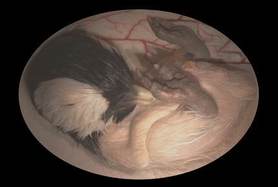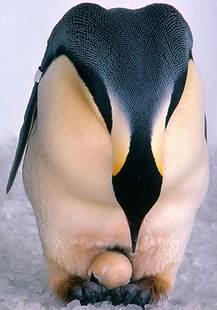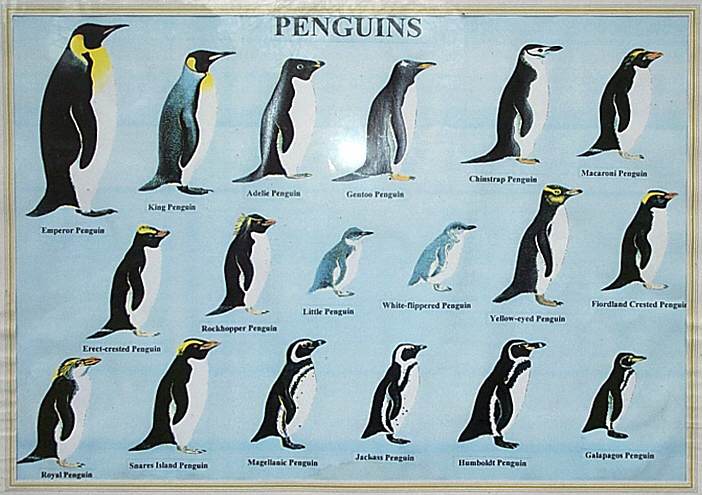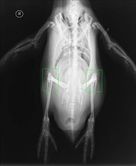Adaptations:
Emperor penguins have many adaptations which help them survive. They have small, stiff wings, which help them glide through the water quickly, and webbed feet to help them swim. They have many layers of waterproof, oily, dense feathers and blubber underneath their skin to keep them warm from the frigid temperatures. Lastly, they have salt glands so they can drink salt water.
Closely Related Species:What are some closely related species to the emperor penguin?
There are 18 different kinds of penguins, and the most closely related are: Gentoo, Adélie, and the Chinstrap. Some homologous structures between these penguins are that they have a big head, short neck, and a long tall body. Variation: Some variations between kinds of penguins are that emperor penguins have yellowish-orange markings near their ears. Another variation would be that they are the largest in size out of all the penguins. The head shape also varies among all of the types of penguins. Evolution Specifics:When was the emperor penguin discovered?
First recorded appearance is believed to be in the 1700s on Captain Cook's second voyage. The first emperor penguin colony was not discovered until 1902. Where were the first fossils found? The first fossils of emperor penguins that were found dated back to 60 million years ago. They were suspected to be from South America because of the fact that South America used to be closer to the edge of the globe meaning that South America could have possibly been where Antarctica is today. It is thought that todays penguins did not always live in a cold climate. Scientists believe that penguins evolved to be able to survive there. What is a common ancestor of the emperor penguin? A common ancestor of the emperor penguin is an albatrosse. Also it has been said that the petrel which is similar to a seagull could also potentially be an ancestor of the emperor penguin. |
Reproduction:The emperor penguin reproduces sexually. Unlike many other animals they breed in the winter. In Antarctica, where they live, that is the darkest time of the year. The penguins arrive on land in March and April. The mates are selected randomly by the females. The female then lays her egg in May or June and the father then guards it and incubates it.
The Development Process: One egg is laid by a female of 5 years of age or older. The egg is incubated (kept warm) by the father for a little over two months. The eggs usually hatch within 70 days. The chicks grow slow at first but eventually begin to grow more rapidly. At 7 weeks old the chicks are able to join the other chicks in what is known as a crèche which is like a small group protected by a few adult penguins. By mid-summer, these babies are independent. They reach their full maturity by anywhere from 3 to 8 years. Similarities and Differences Among Processes: Like the emperor penguin, king and adelie penguin chicks form crèches. Also similar to the emperor penguin, adelie penguin chicks are 7 to 9 weeks old when they are able to go to the crèche. A difference between the process of emperor penguins and little penguins is that little penguins do not form crèches while their young are still "growing up" or developing. How have their bodies changed? One vestigial structure that these birds have is an elbow joint. This joint does not bend anymore because it evolved for the penguins to be able to swim quickly. Also their knees no longer serve a purpose. Their legs have become short and they "waddle" on their feet. |




